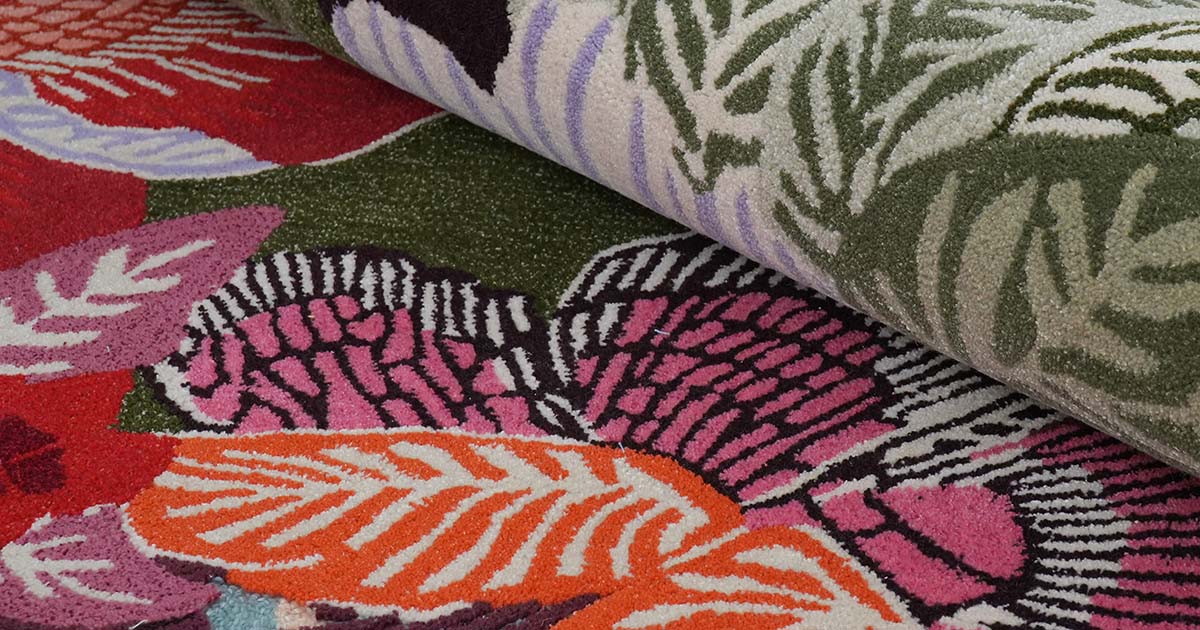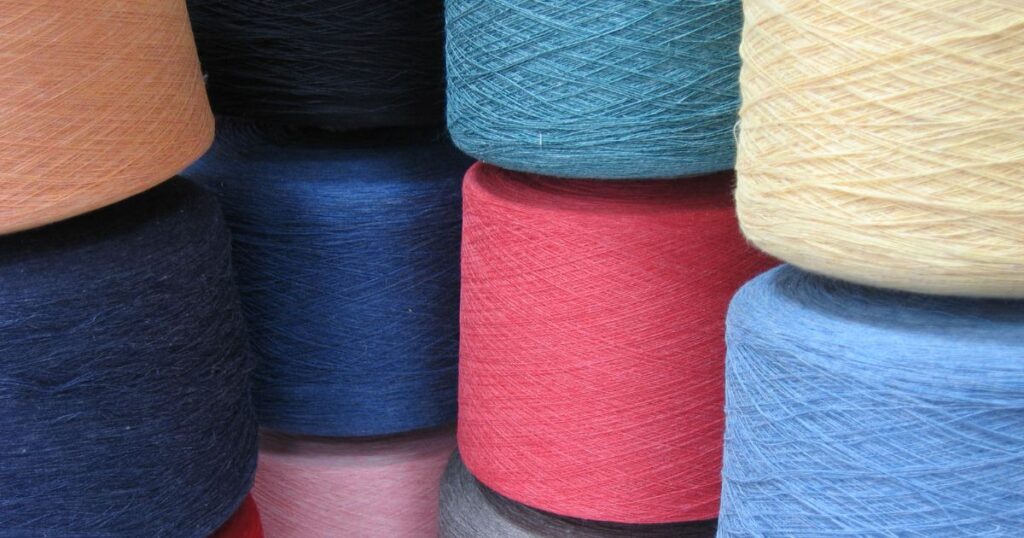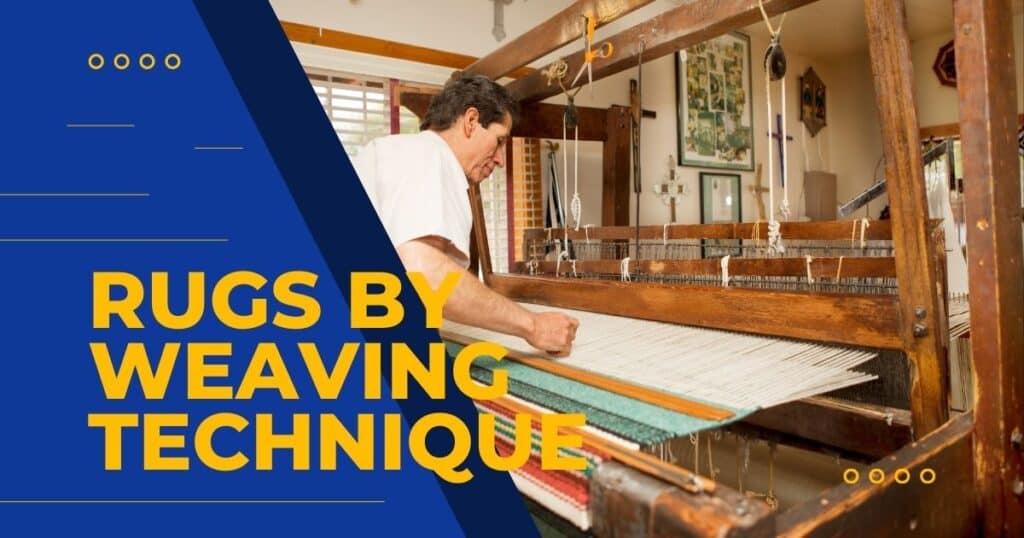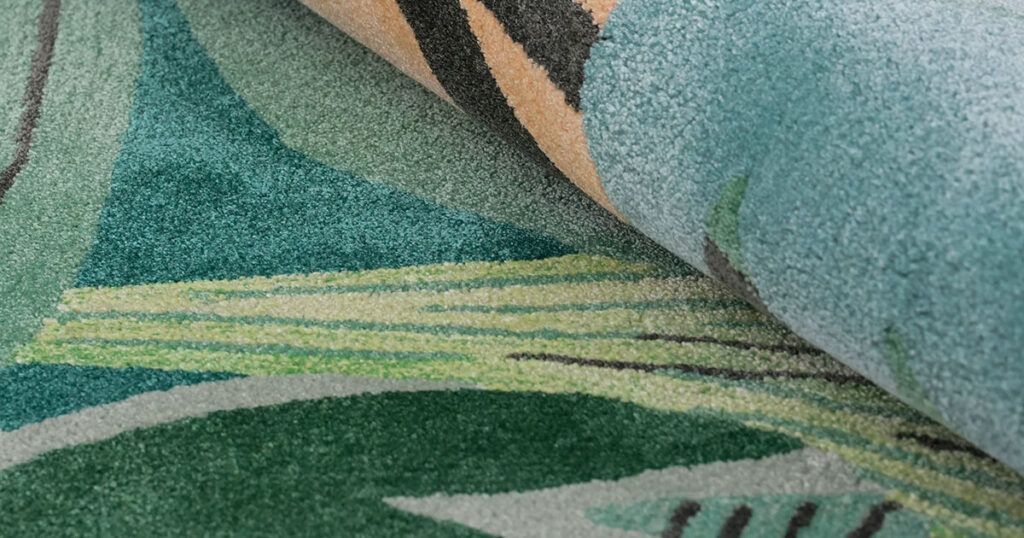Discover why wool is the premium choice for tufted rugs in this comprehensive blog post.
We’ll delve into wool’s unique properties, from its durability and fire resistance to its eco-friendly nature.
You’ll also learn about the detailed tufting process that transforms wool into beautiful, long-lasting rugs.
Find out how wool compares to synthetic fibers and explore scenarios where each is best suited.
Gain valuable insights to help you choose the perfect material for your next rug project.
Can’t wait to learn more about wool tufted rugs? Read on!
What is New Zealand Wool?
New Zealand wool is a premium natural protein fiber sourced from sheep breeds raised in New Zealand.
It’s highly valued in the rug industry because of its exceptional cleanliness and naturally white color, which allows it to be dyed in vivid colors – from crisp pastels to deep blacks.
The fibers have a natural crimp (waviness) that gives wool its characteristic resilience and bulk.
What makes New Zealand wool particularly special for carpet and rug making is its reputation as a premium carpet wool. The exceptional whiteness and cleanliness of the fiber makes it ideal for accepting dyes readily, resulting in richly colored rugs with remarkable color clarity that other wool types can’t achieve as easily.
After shearing (a renewable process that occurs annually), the wool is graded for quality, cleaned to remove lanolin and impurities, and then combed and spun into yarn. For tufted rugs, these yarns are often plied (twisted together) to achieve the desired thickness.
Why Wool is Ideal for Tufted Rugs
Durability and Resilience
Wool is exceptionally strong, elastic, and resilient compared to most other rug materials. The natural crimp in wool fibers acts like a coil spring, allowing the rug to withstand heavy foot traffic and pressure without losing its shape or appearance.
New Zealand wool in particular is noted for its superior resilience – the pile bounces back after being walked on, reducing flattening and wear over time. This makes wool rugs perfect for busy areas in your home. The coiled spring-like crimp in the fiber helps it “bounce back” after compression, meaning a wool rug can withstand foot traffic and furniture weight without crushing as easily as synthetic alternatives.
Even in commercial settings with constant foot traffic, New Zealand wool maintains its appearance significantly longer than most synthetic options. High-quality wool rugs can last 20+ years with proper care, making them an excellent long-term investment for both residential and commercial spaces.
Natural Stain and Soil Resistance
Wool has a natural waxy coating (lanolin) and microscopic scales that repel water-based stains and soil. This protective layer makes it harder for dirt to penetrate deep into the fibers, keeping it near the surface where it can be easily vacuumed away.
When liquids are spilled on wool, they tend to sit on the fiber surface briefly, giving you valuable time to blot them before they cause permanent staining. This natural stain resistance works particularly well for water-based spills, though prompt attention is still needed for colored liquids like red wine or coffee.
Wool also doesn’t build up static electricity, so it doesn’t attract dust the way synthetic fibers can. This quality, combined with wool’s natural structure, helps it hide soil better and maintain its appearance longer between cleanings. The natural scales on wool fibers also help release dirt during vacuuming, making maintenance simpler compared to some synthetic options.
Built-in Flame Resistance
One of wool’s unique properties is its natural flame resistance. Due to its high moisture and protein content, wool will smolder and self-extinguish when exposed to fire rather than burst into flames. This built-in safety feature makes wool ideal for rugs in family homes.
Eco-Friendly and Sustainable Choice
As a natural, renewable fiber, wool is an environmentally-friendly choice for rugs. Sheep grow a new fleece every year, making wool harvestable annually without harming the animal.
Wool is also biodegradable and recyclable. At the end of its life (which can be decades), a wool rug won’t sit in a landfill for centuries – it will eventually break down and return nutrients to the soil.
New Zealand is known as a leader in ethical sheep farming and shearing practices (thanks to strong animal welfare laws), which is another reason NZ wool is prized not just for fiber quality but also for being humanely and sustainably sourced.
Superior Moisture and Odor Management
Wool can absorb up to 30% of its weight in moisture without feeling wet to the touch.
- It naturally wicks away water vapor, helping to regulate humidity in the room.
- This remarkable property makes wool naturally resistant to mold and mildew growth despite its moisture-absorbing abilities.
The fiber’s ability to regulate humidity creates an environment that’s less hospitable to dust mites, contributing to its hypoallergenic qualities. This is particularly beneficial for those with respiratory sensitivities or allergies.
Additionally, wool has anti-microbial properties that prevent unpleasant odors from developing in the rug, keeping your home fresh. Unlike synthetic fibers that can trap odors, wool naturally releases absorbed moisture and odors when humidity levels drop, essentially “self-cleaning” to an extent.
Natural Insulation and Sound Absorption
The crimped structure of wool fibers creates millions of tiny air pockets that act as natural insulators. Wool rugs feel warm and cozy underfoot while also providing sound absorption to make the room quieter. They can even help with energy efficiency by adding a layer of insulation to your floors.
How Wool Tufted Rugs are Made
Preparation: A piece of backing fabric, usually cotton or jute, is stretched tightly on a frame. The rug design is drawn or printed on this backing.
Tufting Process: A tufting gun is used to punch the wool yarn through the backing, forming loops. The artisan fills in the design by hand, working from the back side.
Securing the Tufts: After tufting is complete, a second fabric (called a scrim) is glued to the back using latex adhesive to hold the tufts in place. This is an essential step for the rug’s stability.
Creating the Pile: The loops are then sheared to create an even pile height. For a cut-pile rug, the loops are cut. For a loop-pile, they are left intact.
Finishing: The rug is removed from the frame, and the edges are bound for a finished look. Additional carving or shearing can be done to add texture and accentuate the design.
Wool vs. Synthetic Fibers
Advantages of Wool
Superior Durability
Wool rugs maintain their shape even with heavy foot traffic, while synthetic rugs tend to wear down faster and need replacement sooner. The resilience of wool fibers means they can withstand pressure from furniture and foot traffic without crushing permanently.
Natural Properties
Wool is naturally dirt-resistant, stain-resistant, and flame-retardant without chemical treatments. Wool’s high ignition point and self-extinguishing properties make it naturally safer.
Temperature Regulation
Wool helps regulate room temperature and dampens noise, while synthetics lack these insulating properties. The crimped structure creates millions of tiny air pockets that provide natural insulation.
Appearance Over Time
Wool develops a beautiful patina with age, while synthetics often look worn and faded over time. Even as wool ages, it tends to look distinguished rather than simply “worn out.”
Indoor Air Quality
Wool traps dust and allergens, improving air quality, whereas some synthetic rugs can emit VOCs (volatile organic compounds). Wool can actually help purify indoor air by trapping particulates until they’re vacuumed away.
Touch and Feel
Wool offers a more luxurious, substantial feel underfoot compared to most synthetics. While some synthetics like acrylic attempt to mimic wool’s feel, they generally can’t match the authentic comfort of real wool.
Where Synthetics Have an Edge
Price Point
Synthetic rugs are significantly less expensive than wool rugs, often costing a fraction of the price of a comparable wool rug.
Moisture Resistance
Synthetics like olefin (polypropylene) are more suitable for damp areas like bathrooms and basements where wool might absorb too much moisture.
Initial Shedding
New wool rugs shed loose fibers for a period (especially when new), while synthetics typically shed less. This shedding is normal for wool and will diminish over time, but can be a nuisance initially.
Color Options
Some synthetics can offer more vibrant color choices and patterns, though high-quality New Zealand wool can accept most dyes beautifully.
Cleanability
Synthetic rugs can often be cleaned with stronger cleaning agents that might damage wool, making some stains easier to remove.
Oil Stain Resistance: While wool has natural water-based stain resistance, some oil-based stains can be more challenging to remove from wool than from certain synthetics.
When to Choose New Zealand Wool
New Zealand wool is the perfect choice when:
Durability & Performance
- You need a rug for high-traffic areas that will see daily use over many years
- You’re looking for a quality investment piece that can last decades (potentially 20+ years with proper care)
- You want a rug that’s easy to maintain and naturally resistant to stains and soil
- You want a rug that will maintain its appearance even after years of use
Comfort & Aesthetic Benefits
- You’re furnishing formal living spaces, dining rooms, or bedrooms
- You appreciate the natural feel and warmth of wool underfoot
- You need a rug with natural insulating and sound-absorbing properties
Health & Environmental Considerations
- You value natural, eco-friendly materials with minimal environmental impact
- You have concerns about indoor air quality and want a hypoallergenic option
For commercial settings, New Zealand wool rugs are ideal for:
- Hotel lobbies and lounges where an impression of luxury is important
- Executive offices and board rooms that require both durability and prestige
- Upscale retail boutiques where appearance and longevity are equally important
- Restaurants and hospitality spaces that need to combine elegance with practicality
- Conference centers and meeting rooms where noise reduction is beneficial
New Zealand wool rugs are NOT recommended for:
- Very moist areas like bathrooms or damp basements – consider rugs made with synthetic fibers in another technique instead
- Outdoor spaces where exposure to the elements would damage the wool
- Spaces where frequent spills of oil-based substances are likely to occur
- Projects with very tight budget constraints where initial cost is the primary concern
Caring for Your Wool Tufted Rug
To get the most out of your wool rug:
- Vacuum regularly with a suction-only vacuum (avoid beater bars that can damage the pile)
- For new wool rugs, expect some initial shedding – this is normal and will diminish over time
- Rotate your rug periodically (every 6-12 months) to ensure even wear, especially in high-traffic areas
- Clean spills promptly by blotting (never rubbing) with a clean white cloth and mild wool-safe cleaner
- For stain removal, use only cleaning products specifically designed for wool (alkaline cleaners and bleaching agents can damage wool fibers)
- Have your rug professionally cleaned every 1-2 years by specialists experienced with wool rugs
- Use rug pads to prevent slipping and add cushioning while protecting your floor
- Keep wool rugs out of direct sunlight for extended periods when possible to minimize fading
- If storing a wool rug, ensure it’s clean, use moth repellent, and store it in a cool, dry place (never in plastic, which can trap moisture)
- Address any damage, fraying, or loose threads promptly to prevent further deterioration
Wool Blends: Another Option
For those who want the benefits of wool with some additional advantages or cost savings, wool blends can be an excellent compromise. Common wool blends include:
- Wool-Nylon Blend: Typically 80% wool and 20% nylon, this blend maintains wool’s appearance and feel while adding nylon’s superior abrasion resistance. Ideal for very high-traffic commercial spaces.
- Wool-Viscose/Silk Blend: Combines wool’s durability with viscose or silk’s luxurious sheen for rugs that have both resilience and visual interest. The silk or viscose is often used to highlight specific design elements.
- Wool-Acrylic Blend: Reduces cost while maintaining a wool-like appearance. However, these generally won’t perform as well as pure wool or wool-nylon blends over time.
When considering a blend, look for those with at least 80% wool content to maintain most of wool’s beneficial properties while gaining additional advantages from the complementary fiber.




